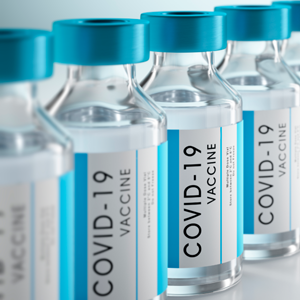 Recently, President Biden and the Department of Labor issued the emergency temporary standard (ETS) for their rule directing employers of 100 employees or more to require vaccination or weekly testing of their employees.
Recently, President Biden and the Department of Labor issued the emergency temporary standard (ETS) for their rule directing employers of 100 employees or more to require vaccination or weekly testing of their employees. Here are some topics for your consideration:
- Determining employee count: You should use the total employees of your firm nationwide. Meaning if you have 20 employees in five states, you would be covered by this rule. Temporary employees and part time employees are also counted toward your total. Unionized work places are also covered by this rule. Independent contractors, those who exclusively telework from home and don’t interface with others, and those that work exclusively outdoors do not count.
- Implementing an employer policy on vaccination: The rule requires that you write and implement a policy on vaccination. Your policy “must require vaccination of all employees” with the exception for three groups: those who cannot get the vaccine for medical reasons, those who need to delay the vaccine for medical reasons, and those who are entitled to reasonable accommodations for sincerely held religious beliefs, or a disability. Your policy can treat different groups of employees differently depending on criteria. For instance, if only some of your workforce reports to the office, and some solely telework from home, the employer may call out in its policy that they are only requiring vaccines for those reporting to the physical office.
- What to include in the employer policy: The employer policy should clearly call out the requirement for the COVID-19 vaccine; when people could be excluded (those are the specific reasons called out above); how the vaccine status will be determined (more below); how the information on vaccine status will be collected and maintained; paid time and sick leave for vaccine purposes; how you will notify regarding a positive COVID test and what your removal policies will be; and any disciplinary proceedings for an employee who refuses to comply. Employers should also include when it is effective, who it applies to, and where to find additional information on preventing COVID. If you already have a COVID policy, you should evaluate it with these requirements and update if necessary. You are not required to submit your plans to OSHA but it could be requested by the Assistant Labor Secretary, in which case you must submit it in writing within four business hours.
- How to Determine Vaccination Status: Employers are expected to obtain proof of vaccination status, but can choose what way to do so. Acceptable options are viewing/copying the physical vaccination card, receiving a photocopied version, or a photo of the card. The employer is required to maintain a copy of the vaccination proof. These documents are considered to be medical records, and have to be maintained as such. At this time, booster shots and additional doses are not included in the definition of fully vaccinated, so the employer does not need to collect them. Previously having COVID is also not included in the definition of fully vaccinated, and does not impact this requirement.
- Specific acceptable documentations for proof:
- Immunization record from the provider or pharmacy
- A copy of the COVID-19 vaccination Record Card
- A copy of medical records documenting the vaccine
- A copy of immunization records from a public health, state, or tribal immunization information system
- A copy of any other official documentation that contains the type of vaccine administered, dates, and the name of the health care professional or clinic administering the vaccine.
- For these documents to be accepted, it must legibly include the employees name; the type of vaccine received; the dates; and the name of the professional or clinic administering them.
- If an employee loses their card, and cannot receive other documentation after contacting the vaccine provider, they can provide a signed and dated statement that attests to their vaccination status; attests that the card is lost or they are “otherwise unable to produce proof required”; and include the following language: “I declare that this statement about my vaccination status is true and accurate. I understand that knowingly providing false information regarding my vaccination status on this form may subject me to criminal penalties.” They should, to the best of their knowledge, include the type of vaccine administered, the dates administered, and who administered it.
- Specific acceptable documentations for proof:
- Supporting employee vaccines: Employers must provide employees reasonable time during work hours to get their primary vaccine doses. If an employee experiences side effects and has accrued sick time, the employer can require that the employee use that time to recover. However, an employer cannot require an employee to end up in the negative if they need additional time to recover but do not have accrued paid time off. If they get vaccinated outside of work hours, the employer does not have to provide additional paid time or benefits.
- Testing unvaccinated employees: For those unvaccinated employees who report in a generally regular work schedule, testing very seven days is required. However, for an employee who maybe goes to the office once a month, the employer has to ensure that they are tested for COVD-19 within seven days before returning to the workplace and submits documentation of that test result. If an employee has not tested, they cannot come to the workplace even if they wear a face covering and are isolated. If an employee gets COVID, they do not have to undergo weekly testing for 90 days following the positive test. Employers must require copies of every test result and must be treated as medical records.
- Employer costs for testing: Employers are not required to pay for costs of testing. However, in some states or jurisdictions that may be different (in California, for instance).
- Face coverings: Depending on your workplace policy, only employees who are unvaccinated and undergo weekly testing need to wear face coverings. Employers cannot prohibit employees from wearing face coverings, though, regardless of vaccine status.
- Establish policy on vaccination
- Determine vaccination statue of each employee, obtain acceptable proof of vaccination, maintain records and roster of vaccination status
- Provide support for employee vaccination
- Require employees to promptly provide notice of positive COVID-19 test or COVID-19
- Remove any employee who received positive COVID-19 test or COVID-19 diagnosis
- Ensure employees who are not fully vaccinated war face coverings when indoors or when occupying a vehicle with another person for work purposes
- Provide each employee information about the ETS; workplace policies and procedures; vaccination efficacy, safety and benefits; protections against retaliation and discrimination; and laws that provide for criminal penalties for knowingly supplying false documentation
- Report work-related COVID-19 fatalities to OSHA within 8 hours and work-related COVID-19 in-patient hospitalizations within 24 hours
- Make certain records available
- Ensure employees who are not fully vaccinated are tested for COVID-19 at least weekly (if in the workplace at least once a week) or within 7 days before returning to work (if away from the workplace for a week or longer).
